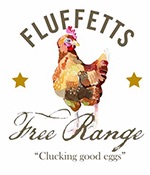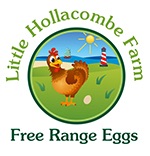Autumn is upon us and with it an increased risk of avian influenza (AI). Rodents are a well-known source of disease so controlling pests as the weather cools is a crucial part of any farm’s AI control measures.
Cold, dry weather allows the virus to thrive, being transmitted from bird to bird through droppings and saliva.
There are some simple steps, though, that poultry farmers can take to improve hygiene in their poultry houses and significantly reduce the threat of an avian influenza outbreak in their flock. To protect birds from diseases like avian influenza as well as others, poultry farmers should look to increase levels of hygiene in enclosures. Disinfectants can reduce the spread of diseases dramatically if used carefully and consistently.
To effectively use disinfectant in your poultry houses, thoroughly disinfect all accommodation. This is best achieved by pressure washing the sides and floors of bird housing with a quality bactericidal detergent before spraying with a disinfectant.
Bacteria, viruses and other micro-organisms are often present on clothing and boots. Those working with birds should wear clean overalls and dip boots in disinfectant to reduce the risk of introducing harmful diseases. Before entering poultry housing, it is also good practice to wash hands with an anti-bacterial soap.
Any equipment that is being used in conjunction with bird keeping should be disinfected in a solution and such solutions should be changed frequently.
These simple steps and effective tools will help reduce the spread of viruses like avian influenza to an absolute minimum and prevent farmers suffering substantial financial losses, as well as protect themselves, their friends and family, and their flocks.
The importance of tackling rodents
Every farmer knows that controlling rats and mice isn’t as simple as picking the strongest bait off the shelf and leaving it down for rodents to consume. In fact, there are a whole host of factors that should be considered.
Before even reaching for a rodenticide, the best practice is to first carry out environmental management such as proofing buildings and tidying the site, and then explore non-chemical control methods, whether it is utilising natural predators, or using instant-kill traps.
But when chemical control is required, many don’t realise that bait rotation is vital to long-term success.
Effective rodent control isn’t just about choosing the right bait. Of course, factors such as speed of control, potency, and palatability are incredibly important, but it is critical to alternate your baits.
The reason for this is two-fold – some of the biggest challenges facing farmers are rodenticide resistance and bait shyness.
Rodenticide resistance is a phenomenon that has been causing increasing issues across the country, particularly in certain areas such as Greater Manchester or South Central England. Much like how humans can become resistant to certain antibiotics, rodents have developed resistance to the active ingredients in first-generation anticoagulants and some second-generation anticoagulants, particularly difenacoum and bromadiolone.
To combat any potential resistance problem, farmers should be utilising rodenticides that contain either cholecalciferol or flocoumafen as the active ingredient, as there is no known resistance to either active. Ideally, usage should be rotated between the two to prevent any possible future resistance from developing.
In addition, although more prevalent in mice, rodents can become bored of the rodenticide on offer and search for alternative food sources. Switching between two highly palatable rodenticides will ensure they remain an attractive food source, encouraging rodents to continue feeding.
Of course, the rodenticide used must be highly palatable and potent. However, product stewardship is essential to ensure the future-proofing of effective solutions on the market and safeguard the pest management toolbox.
So, how often should farmers be rotating their baits? It is recommended that rodenticides should be changed every three to four months as best practice, with a minimum of every six months, to ensure a long-term, successful pest management programme.
Top tips for effective environmental management
The best way to deal with rodents is to prevent them from becoming active in the first place, so farmers should be “rodent-proofing” their sites now to protect profits this winter.
Particularly at this time of year when temperatures begin to dip, rats and mice will be looking for warm harbourage where food sources are readily available, making buildings where animal feed or crops are stored very appealing. There are a few very simple preventative steps farmers can take to deter the pests:
Keep site clean and tidy. It may seem simple, but keeping sites tidy should become a regular part of any farmer’s maintenance routine. Keep pallets and sacks to a minimum as these make for the perfect harbourage, and remove any rubbish or unwanted stores of straw and hay as soon as possible to give rats and mice less time to move in.
Cut back vegetation and bushes around buildings. Rats have a fear of open spaces, so by trimming back shrubbery by at least one metre around all buildings on land, they will be less inclined to cross an open yard to enter a building. This also allows farmers to readily observe any rat burrows and gives natural predators more chance of spotting the pests too.
Rodent-proof buildings. Rodents can fit through surprisingly small openings – mice can get through gaps of 6mm and rats can get through gaps of 10mm – so carefully inspect any buildings, stores or outhouses for wear and tear in walls, piping, doors and windows. Use a hardwearing material like metal sheeting to prevent rodents from re-entering through any compromised areas, as rats can chew through everything from wooden posts to dry walls.
Inspect the building for signs of an existing infestation. Visible footprints at ground level or on ledges, smear marks along ledges, walls or cables, damage in structures and equipment from gnaw marks, and droppings are all tell-tale signs of activity. Don’t forget to look at electrical wires and cabling – many farm fires have been caused by rodents chewing through electrical wires.
Store animal feed and green safely. Taking measures to prevent animal feed or grain from being contaminated and consumed is an important step. Rats can carry up to 45 dangerous diseases which can pose a serious health and safety issue. Ensure the stores are thoroughly cleaned and inspect every inch for any entry points or damage where rodents may enter and clean up any food spills immediately.
Monitor for activity. Using a monitoring paste will help farmers spot rodent activity before an infestation can get out of hand. It also means any rodents in the area will become more familiar with the object, reducing neophobia when the monitoring baits are replaced with rodenticide. An alternative monitoring method is to leave a patch of sand along a suspected rat run overnight and look for paw marks in the sand the next day.
A Downside to Vaccination
The French poultry industry has been hit by export restrictions after becoming the first country to vaccinate ducks against avian influenza.
The US Department of Agriculture’s Animal and Plant Health Inspection Service (APHIS) said it was placing restrictions on the importation of poultry from France, as well as live ducks, duck eggs, and duck products from the European Poultry Trade Region (which excludes Great Britain) as well as Iceland, Switzerland, Liechtenstein, and Norway.
The United States does not allow the import of poultry from countries affected with HPAI or from flocks that have been vaccinated by HPAI. Vaccination of poultry against HPAI virus may mask HPAI virus circulating in poultry. Vaccinated birds may not show signs of HPAI infection, which could lead to the export of infected live animals or virus-contaminated products to the United States.
The restrictions came into effect on 1 October.
Immunity?
Scientists have discovered that some seabirds are demonstrating immunity to avian influenza, a research team lead by the Animal Plant Health Agency (APHA) has said.
The researchers have developed laboratory tools that can dissect the immune response in birds that have been exposed to avian influenza viruses in their lifetime.
Preliminary investigations in a small sample size of some species of seabird, including Northern gannets and Shag, revealed specific immunity to H5N1 showing exposure and recovery in a proportion of birds. However, avian influenza viruses are prone to change and so antibody levels will likely decline over time with next year’s offspring not guaranteed to be immune suggesting there are no great population level benefits yet.
Scientists hope to look at the effect of antibodies on infection, to better predict the emergence of new viruses with different protein combinations in the future.
Highly pathogenic avian influenza is a significant burden on animal health globally with over 350 infected UK premises detected between 2020 and 2023. Wild bird populations have also suffered significant mortalities across multiple species and wild mammals that have scavenged dead bird carcases have also been infected.
The researchers also identified several genetic characteristics that explain the ability of the current H5N1 viruses to spread fast and infect a greater range of species. They mapped the spread of infection over time and made important discoveries regarding airborne transmission of the virus – determining that infectious virus can only travel short distances (less than 10 metres) and is very unlikely between farms through the air.
To further understanding the terrible disease, including to study immunity in a range of wild birds, an additional £3.3 million from UK Research and Innovation’s (UKRI) Tackling Infections programme and the Department for Environment, Food and Rural Affairs (Defra) has been granted.
Professor Ian Brown, APHA’s Director of Scientific Services and project manager, said: “APHA has led this consortium of the greatest minds from eight world-leading British institutions to address gaps in our understanding of avian influenza and I am excited that we have already made some important discoveries, particularly around the genetic makeup of avian influenza viruses.
“I am pleased that with further funding this work can continue – helping us to control the spread of the disease while furthering UK animal health science and ensuring we maintain our world-leading reputation in the field.”
UK’s Chief Veterinary Officer Christine Middlemiss said: “I am delighted this research project has received further funding. Bringing together all our national experts increases the speed and quality of our understanding of avian influenza and how it behaves in the UK.
“This critical research will aid our development of further strategies to protect our birds and minimise the








